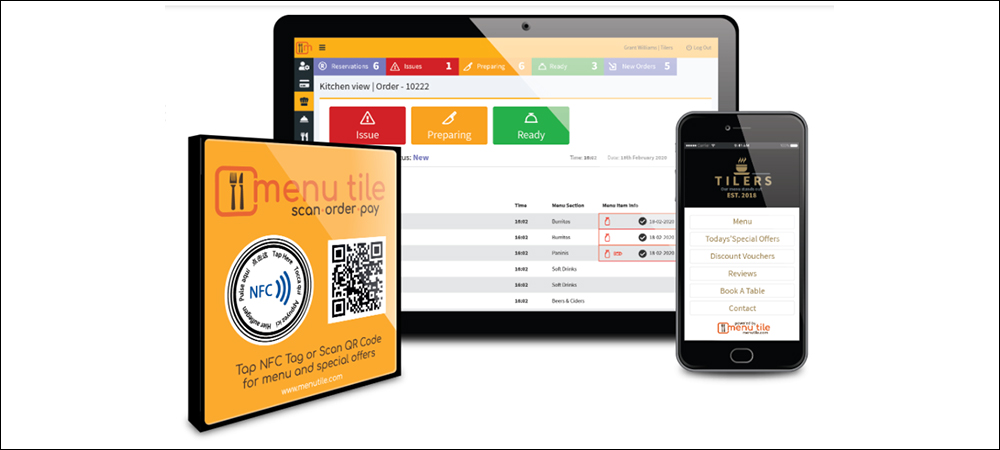Jun 22, 2021As restaurants reopen their businesses to in-house dining, as well as takeout, following the pandemic-based shutdown, smartphone ordering systems have become more commonplace. Diners are accessing menus online, and in some cases are using apps to place orders without handling credit cards or menus, thus reducing face-to-face interactions. Qiiosk, a startup based in Yorkshire, England, offers an app-free solution that enables customers to place orders, request assistance or make payments from their table, by tapping their smartphone against a contactless dining tool called a Menu Tile.
The solution leverages Near Field Communication (NFC) and QR code technologies to make the process fast and app-free, according to Qiiosk. Several British restaurants have already deployed the system, the company reports, which was ramped up quickly this spring in order to meet the needs of reopening restaurants. The company is using NFC tags from HID Global, which it adopted, in part, due to HID's ability to quickly provide the NFC technology in large volume. The Menu Tile is being applied to tables or placards, and diners can use the system to book tables, schedule deliveries, request food and communicate with the kitchen staff.

Restaurant customers first proceed to a table or a point-of-sale area upon arrival. Because no app is required, they can simply tap their phone against the nearest Menu Tile (at the table or at the front of the business), and the NFC reader in the phone will capture the Tile's ID and open the related menu site. If they lack NFC functionality or prefer to scan a QR code, they can do that instead. The solution not only provides a menu but enables customers to request a table when they enter and then seat themselves. They can ask a server to visit their table or speak with someone in the kitchen about their order. Once finished with their meal, they can tap their phone against the Tile to pay for it.
By using the system, HID explains, restaurants can provide a safer environment for those returning to onsite dining, as well as for employees, by limiting interactions. The technology is also intended to make the experience more efficient for workers and customers alike. Further health benefits include real-time allergen information on menus, which can be accessed via the NFC tags. In addition, restaurants can update the menus in the system on a real-time basis, so that diners can access up-to-the-minute menus and place orders for in-person, takeaway or delivery dining.

Jean Miguel Robadey
Qiiosk built the solution to provide the hospitality industry with a faster return to normal following a year of COIVD-19 closings. The company offers the solution on a software-as-a-service basis. The firm needed to quickly ramp up the system with 13.56 MHz NFC functionality, compliant with the ISO 14443 standard, so it sought a company that offered an NFC tag rugged enough to be adhered to menus and metal tables in public spaces. In the end, it chose HID Global to provide such a solution.
The system leverages HID's NFC tags and NFC-enabled PVC credit cards, according to Jean Miguel Robadey, HID Global's VP of industrial smart components and identification technologies. "The touch-free opportunities that Qiiosk's solution enables are especially valuable now," Robadey says, "with restrictions on dining and uncertainty about the future of the industry." HID's NFC tags, he adds, provide stable read rates, so the technology can be used easily.
As restaurants adopted the technology, Qiiosk needed to provide Menu Tiles in volume within a short timeframe. "Using HID NFC tags allowed Qiiosk to upgrade their physical product with improved read rates and produce enough Tiles to supply customers," Robadey states. "Qiiosk is positioned to continue their high growth with a product that can endure the conditions of bars and restaurants." That, he says, leads to cost savings and reliability. So far, the technology has been adopted by Grand Trunk Road and Pasta Che Musica in London, as well as Wold Top Brewery in East Yorkshire.

